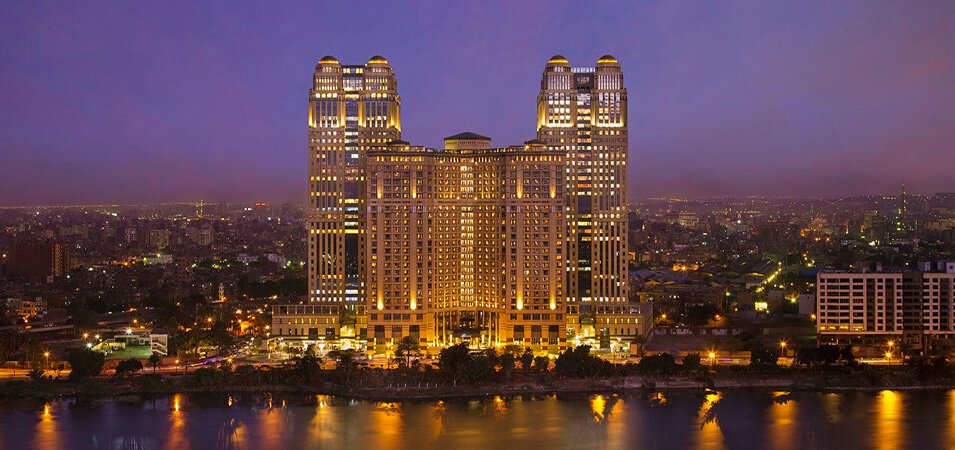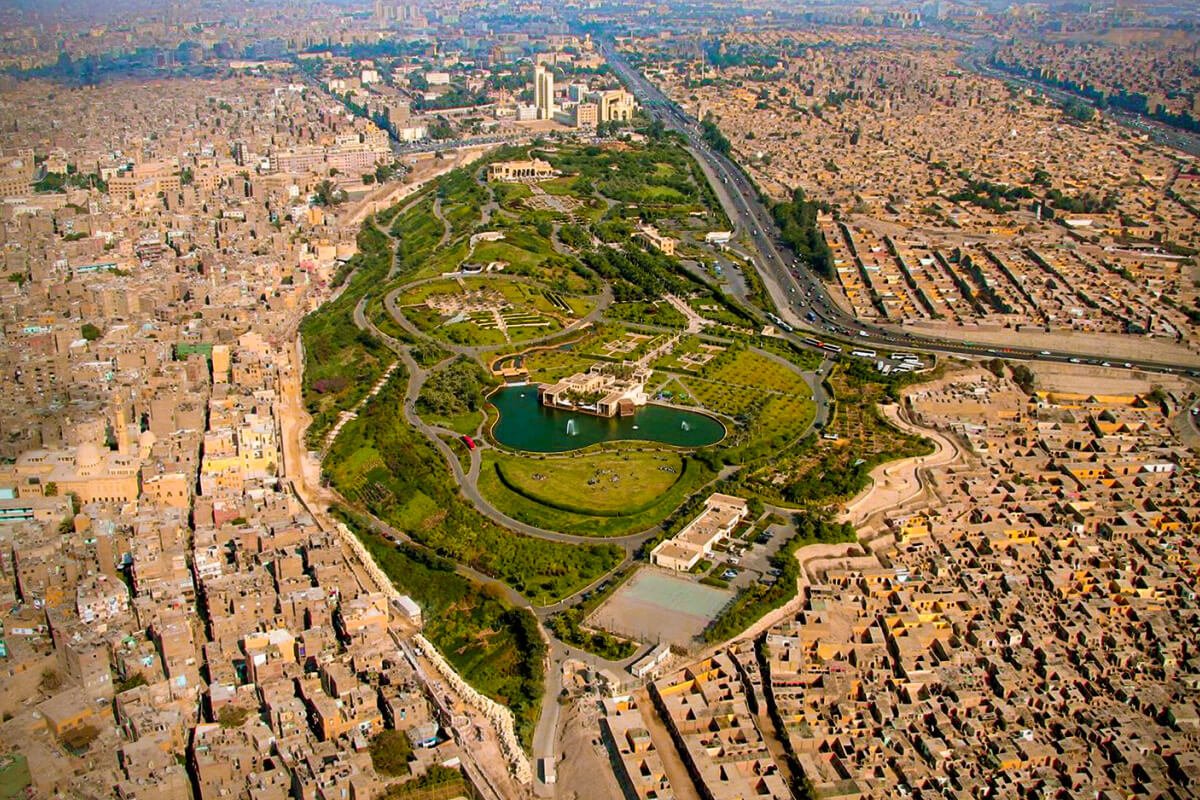Introduction
Cairo, where millennia-old pyramids meet futuristic skyscrapers, is a paradise for architecture lovers. This magnificent city seamlessly blends ancient wonders with cutting-edge modern design. From the iconic Giza Plateau to the gleaming Nile City Towers, Cairo architectural marvels tells the story of human civilization.
The city offers visitors an unparalleled journey through time. Ancient monuments stand proudly alongside contemporary masterpieces. Key landmarks include the legendary Cairo Tower, the historic Giza Plateau, and the upcoming Grand Egyptian Museum. Each structure represents a different era of architectural excellence.
Walking through Cairo feels like traveling through a living museum. Every street corner reveals new architectural treasures waiting to be discovered.
Ancient Cairo’s Architectural Marvels
The Giza Plateau
The Giza Plateau stands as humanity’s most impressive ancient architectural achievement. Home to the Great Pyramids and the enigmatic Sphinx, this site has captivated visitors for over 4,500 years. The monuments continue to inspire awe in modern travelers.
Key highlights of the Giza Plateau include:
- The Great Pyramid of Khufu – The last surviving ancient wonder of the world
- The Sphinx – A mysterious guardian carved from a single limestone block
- The Pyramid of Khafre – Nearly as impressive as its famous neighbor
- The Pyramid of Menkaure – The smallest but equally fascinating pyramid
Ancient Egyptian engineers achieved remarkable precision in these structures. The Great Pyramid originally stood 146 meters tall and remained the world’s tallest building for nearly 4,000 years.
Historic Mosques & Citadels

Islamic Cairo showcases some of the world’s finest religious architecture. The Sultan Hassan Mosque dominates the skyline with its towering minarets and intricate stonework. This 14th-century masterpiece represents the pinnacle of Mamluk architectural achievement.
The Al-Rifa’i Mosque stands directly opposite Sultan Hassan Mosque. Built in the 19th century, it mirrors the medieval style while incorporating modern construction techniques. Together, these mosques create an architectural dialogue across centuries.
The Citadel of Saladin offers visitors panoramic views of the entire city. Built in the 12th century, this fortress complex includes:
- Muhammad Ali Mosque – Known as the Alabaster Mosque for its gleaming white stone
- Military museums – Housed in historic buildings within the citadel walls
- Panoramic viewpoints – Offering breathtaking views across Islamic Cairo
Islamic Cairo’s winding streets hide countless architectural gems. Medieval madrasas, traditional hammams, and ornate merchant houses create an authentic historical atmosphere.
Modern Cairo’s Architectural Marvels
Cairo Tower
The iconic Cairo Tower rises 187 meters above the Nile River like a concrete lotus plant. Engineers designed this modernist masterpiece in 1961 to symbolize Egypt’s emerging independence and cultural pride. The tower’s unique lattice design sets it apart from conventional skyscrapers.
Visitors can access the tower’s revolving restaurant and observation deck. The 360-degree views encompass the entire Cairo metropolitan area. On clear days, you can see the Pyramids of Giza from the tower’s summit.
The tower represents mid-20th-century Egyptian modernism at its finest. Its distinctive silhouette has become synonymous with Cairo’s skyline. The structure combines functional design with symbolic meaning.
Nile City Towers

The twin Nile City Towers dominate Cairo’s modern business district. These gleaming skyscrapers house luxury offices, five-star hotels, and upscale shopping centers. The towers represent contemporary Egyptian architecture’s ambition and sophistication.
Completed in the early 2000s, these structures showcase:
- Mixed-use design – Combining commercial, residential, and retail spaces
- Modern materials – Glass and steel construction with Egyptian design elements
- Strategic location – Positioned along the Nile for maximum visual impact
- Sustainable features – Energy-efficient systems and smart building technology
The towers’ reflective facades mirror the changing colors of the Nile throughout the day. At night, sophisticated lighting systems transform them into beacons of modern Cairo.
Grand Egyptian Museum
The Grand Egyptian Museum promises to become the world’s largest archaeological museum. Located near the Pyramids of Giza, this architectural marvel blends sleek modern design with ancient Egyptian motifs. The museum’s grand opening marks a new chapter in cultural architecture.
The building’s design incorporates several innovative features:
- Translucent stone facade – Filters natural light while protecting artifacts
- Pyramid-inspired geometry – Echoes the nearby ancient monuments
- State-of-the-art climate control – Ensures optimal preservation conditions
- Interactive exhibition spaces – Combines traditional displays with digital technology
Moreover, the Grand Egyptian Museum bridges past and present through its architectural language. The structure creates a seamless transition between ancient wonders and contemporary museum design.
Green Spaces & Cultural Hubs
Al-Azhar Park

Al-Azhar Park creates a lush oasis in the heart of historic Islamic Cairo. This 30-hectare green space combines traditional Islamic landscaping with modern sustainability principles. The park offers stunning views of ancient minarets and medieval architecture.
The park’s design features include:
- Terraced gardens – Following traditional Islamic garden principles
- Water features – Fountains and reflecting pools create cooling microclimates
- Native plant species – Drought-resistant vegetation suited to Cairo’s climate
- Panoramic viewpoints – Offering spectacular views of the historic city
Furthermore, Al-Azhar Park demonstrates how modern landscape architecture can enhance historic urban environments. The park serves as a community gathering space while preserving views of Cairo’s architectural heritage.
Cairo Opera House
The Cairo Opera House stands as a cultural masterpiece inspired by Islamic architectural traditions. This world-class venue hosts international performances while celebrating Egyptian artistic heritage. The building forms part of Egypt’s National Cultural Center complex.
The opera house showcases sophisticated architectural elements:
- Traditional mashrabiya screens – Providing natural ventilation and privacy
- Geometric patterns – Decorative elements inspired by Islamic art
- Modern acoustics – State-of-the-art sound systems for perfect performances
- Flexible performance spaces – Multiple venues for different types of events
The venue successfully combines aesthetic beauty with functional excellence. International artists and local performers share the same stages in this architectural gem.
Conclusion
Cairo’s architectural marvels create an unparalleled urban experience where ancient wonders coexist with modern innovations. From the timeless Pyramids of Giza to the contemporary Nile City Towers, each structure contributes to the city’s unique character. The upcoming Grand Egyptian Museum promises to add another masterpiece to this remarkable collection.
Visitors can explore thousands of years of architectural evolution in a single day. The city’s diverse building styles reflect Egypt’s rich cultural heritage and ambitious future vision. Whether you’re drawn to ancient monuments or cutting-edge design, Cairo offers architectural treasures for every taste.
In Cairo, every corner tells a story—will you listen?
Check out our other articles:

